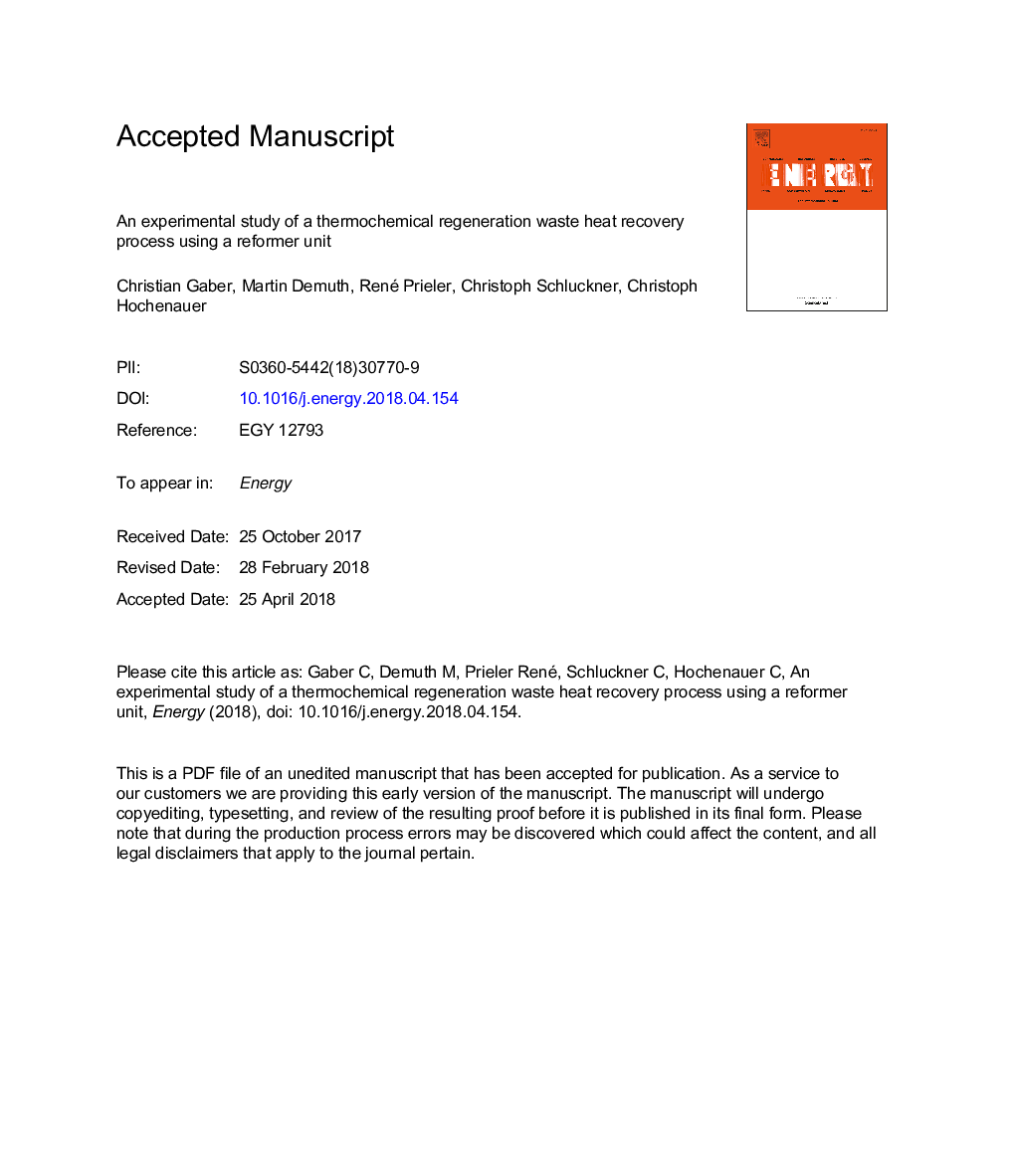| Article ID | Journal | Published Year | Pages | File Type |
|---|---|---|---|---|
| 8071438 | Energy | 2018 | 38 Pages |
Abstract
This paper presents a thermochemical regenerative heat recovery process for utilizing the waste heat of oxy-fuel furnaces, with three significant modifications compared to current state-of-the-art reforming concepts. (I) Experimental tests with a reformer test rig were performed, in order to investigate the bi-reforming of methane into syngas by using water and carbon dioxide with a steam-to-carbon ratio of 0.5. The measured syngas concentrations were compared to calculated equilibrium values and carbon deposits were determined. A methane conversion rate of 95.3% was achieved. (II) Carbon deposits in a regenerator bed are usually burned with purge gases. In contrast to this procedure, oxygen was added to the fuel/exhaust gas mixture in order to cause tri-reforming of methane with a steam-to-carbon ratio of 0.4. The syngas concentrations were compared to equilibrium values and it was found, that tri-reforming significantly reduces carbon formation. A methane conversion rate of 96.7% was achieved. (III) Furthermore, reforming and regeneration cycles were coupled and it was found that the temperature profile within the TCR regenerator bed material varies greatly from that of a common regenerator. Regeneration with water and carbon dioxide was sufficient to eliminate all carbon deposits.
Related Topics
Physical Sciences and Engineering
Energy
Energy (General)
Authors
Christian Gaber, Martin Demuth, René Prieler, Christoph Schluckner, Christoph Hochenauer,
